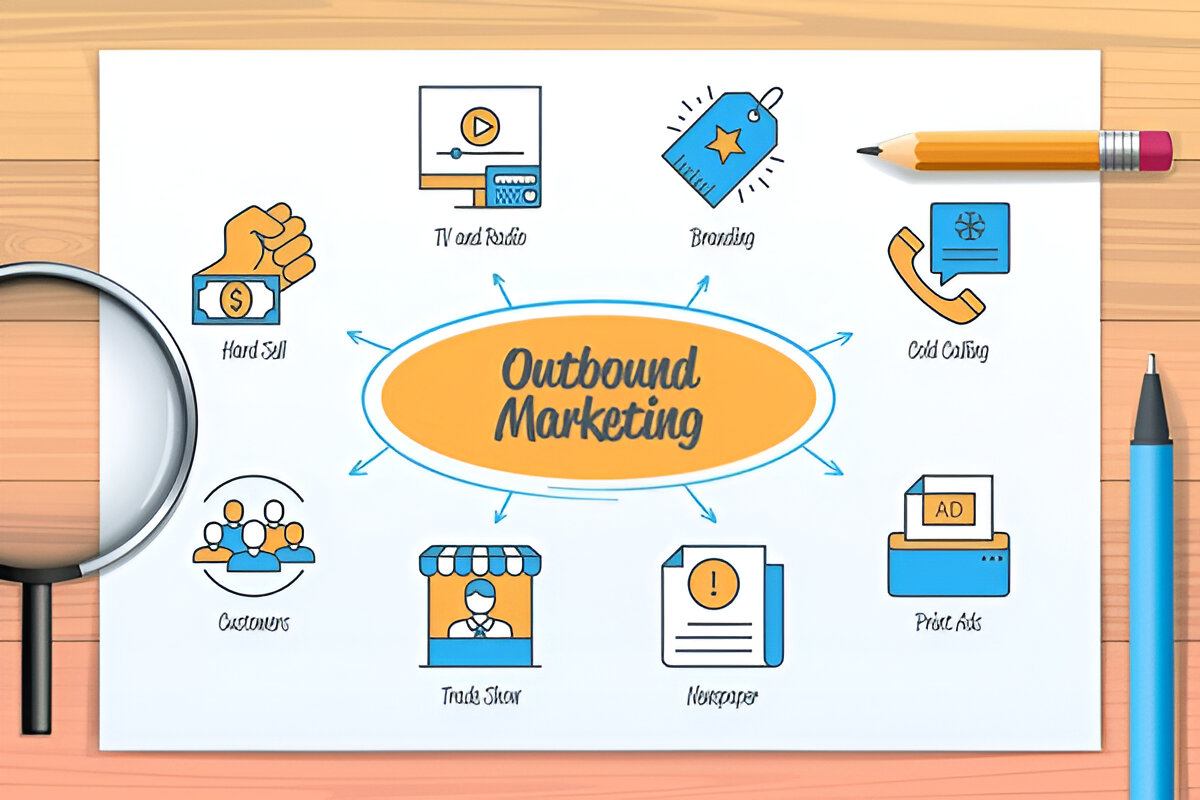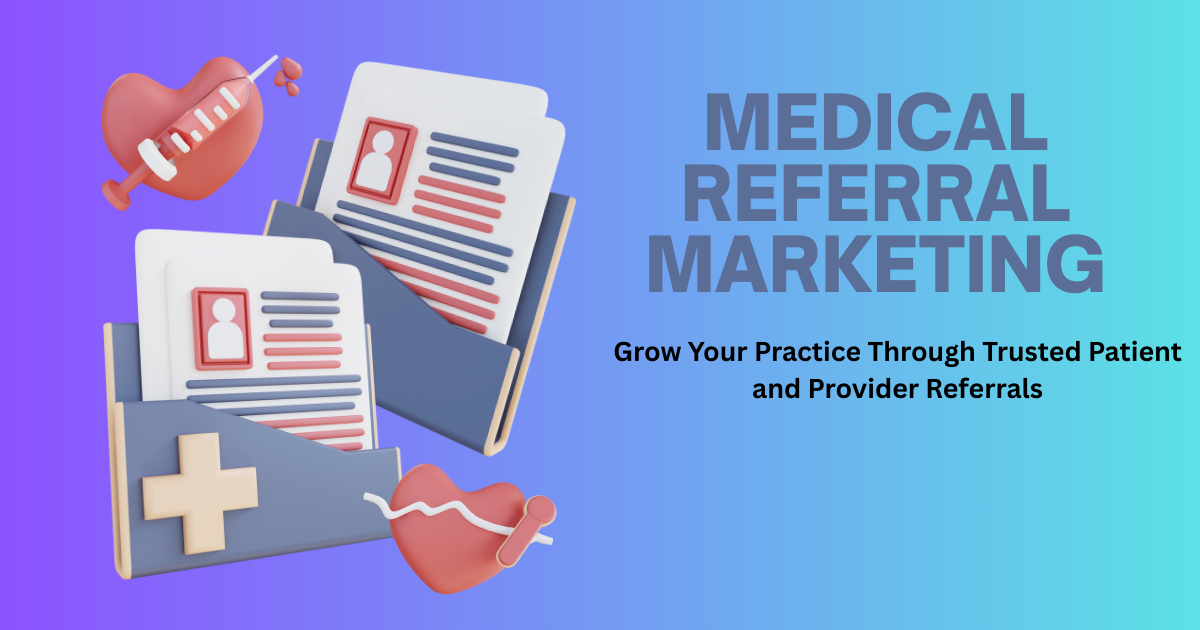Referral marketing has become one of the most powerful tools in a marketer’s arsenal. Businesses across industries are leveraging the influence of happy customers to drive new sales—but the question persists—is referral marketing outbound or inbound?
This blog will answer that question by exploring what referral marketing is, how it works, and where it fits in the world of inbound and outbound strategies. Along the way, we’ll clarify the core principles of inbound marketing, the defining traits of outbound marketing, and how referral marketing uses the best of both worlds (but ultimately aligns more closely with one over the other).
What is Referral Marketing?
Referral marketing is, at its core, the act of encouraging and rewarding customers to recommend your business to others. Instead of spending resources targeting new customers directly, companies utilize their existing clients as brand advocates. By leveraging trust between personal networks, referral marketing drives conversions in a way traditional ads often can’t.
Think of it this way. You’re more likely to try a new café if your best friend insists their coffee is life-changing than if you happen to see a billboard promoting the same shop. That’s the power of social proof, and it’s what makes referral marketing so effective.
But is this technique considered inbound or outbound? To answer that, we’ll first need to define both. While understanding whether referral marketing is inbound or outbound gives you the foundation, it’s equally important to stay ahead of the curve. Check out the Top Trends in Referral Marketing You Need to Know to see how strategies are evolving in today’s market.
Understanding Inbound Marketing
At its core, inbound marketing is about attracting customers by providing value and fostering trust. Inbound marketing emphasizes attracting customers through value and trust-building. Creating compelling content, nurturing leads, and delighting customers are critical. Learn how to turn satisfied customers into advocates in Referral Marketing for Local Businesses: What Works Best.
Key Principles of Inbound Marketing:
- Attract: By providing informative blogs, engaging social media posts, and search-optimized content, inbound marketing attracts potential customers organically to your website or social platforms.
- Engage: This step involves connecting with your audience through meaningful interactions, often through email campaigns, personalized offers, or engaging customer support.
- Delight: The experience doesn’t stop at conversion. Delighting customers means ensuring their post-purchase experience is so seamless and enjoyable that they’re encouraged to return.
Inbound marketing thrives on building long-term relationships rather than short-term results. It nurtures leads and transforms them into loyal customers, which brings us to our next concept.
What is Outbound Marketing?
Outbound marketing takes a more direct and traditional approach, often involving businesses seeking potential customers through promotional efforts. This can include TV ads, cold emails, or paid media targeting users who may not be actively looking for what the business offers.
Characteristics of Outbound Marketing:
- Proactive Outreach: Unlike inbound marketing, the audience isn’t naturally drawn in. Outbound marketing reaches out to them directly.
- Broad Targeting: Many outbound campaigns cast a wide net, seeking to capture as many potential leads as possible, even if they’re not inherently interested.
- Defined Messaging: It’s about controlled messaging, with the business shaping how its ads or promotions appear.
Although outbound marketing is often associated with traditional channels, digital advancements have brought renewed focus to tactics like programmatic advertising or pay-per-click campaigns. It’s effective, but it’s not nearly as relationship-driven as inbound.
Where Does Referral Marketing Fit?

Referral Marketing as an Example of Inbound
Referral marketing aligns most closely with inbound marketing principles because it functions by naturally attracting potential customers. Unlike outbound strategies that “push” messages to a broad audience, referrals draw people who are more likely to convert because of the trust factor built into personal recommendations. Here’s why:
- Attracting through value
When customers refer friends to your brand, they do so because of their positive relationship with your product or service. The recommendation flows organically from customer satisfaction, which is a hallmark of inbound attraction.
- Trust and authenticity
Referrals are inherently more trustworthy than paid promotional efforts. A Nielsen study revealed that 92% of consumers trust recommendations from people they know over any form of advertising. Hence, referral marketing attracts people by building on trust, much like inbound campaigns.
- Pull, not push
People act on referrals because they’re drawn in by the firsthand experience of someone they trust—not because a brand put a persuasive ad in their face.
The Role of Word-of-Mouth in Referral Marketing
One defining element of referral marketing is its dependency on word-of-mouth. A happy customer shares their positive experience with friends, family, or colleagues, driving new leads naturally.
For example:
- Personalized recommendations mean your customers act as advocates, reaching out to people who are likely to value your product, ensuring targeted engagement.
- Social proof amplifies the impact. The more people talk positively about your brand, the more organic traffic and conversions you see.
While referral programs often incentivize customers with discounts or free products, this can still align with inbound marketing. Incentives simply add a layer of encouragement, not force.
Referral Marketing’s Slight Overlap with Outbound
Although referral marketing is primarily inbound, there’s a minor outbound component when businesses actively promote referral programs. Paid ads announcing referral rewards or emails asking customers to share links resemble outbound techniques. However, these elements only serve to initiate the referrals, which still operate on inbound dynamics once they begin.
Why Referral Marketing is Primarily Considered an Inbound Strategy
Referral marketing embodies the ethos of inbound marketing because it prioritizes building trust, delighting existing customers, and using their advocacy to attract new leads. Like inbound methods, it provides value first and fosters loyalty, ensuring a sustainable flow of new prospects.
On the surface, some aspects may appear outbound, but the mechanism of attracting new customers via word-of-mouth remains inherently an inbound approach. The relationships, trust, and authenticity it fosters firmly cement it as part of the inbound framework. Referral marketing thrives on trust, delight, and value-first relationships—hallmarks of inbound marketing. Tracking smart growth? Dive into key measurements in Referral Marketing Metrics That Matter in the Craze Era.
How to Leverage Referral Marketing for Your Business Success
If you want to implement referral marketing, here’s how to start:
- Deliver excellence
Nothing drives referrals like a consistently excellent product or service. Make sure you give customers a reason to recommend you.
- Plan your program
Develop referral rewards that excite your customers and feel attainable to them. Make sharing links or codes as easy as clicking a button.
- Communicate regularly
Use newsletters and social media to remind customers of your referral program, keeping it top of mind.
With a strategic approach to referral marketing, you’ll leverage one of the most cost-effective, trust-driven marketing tools available today.









